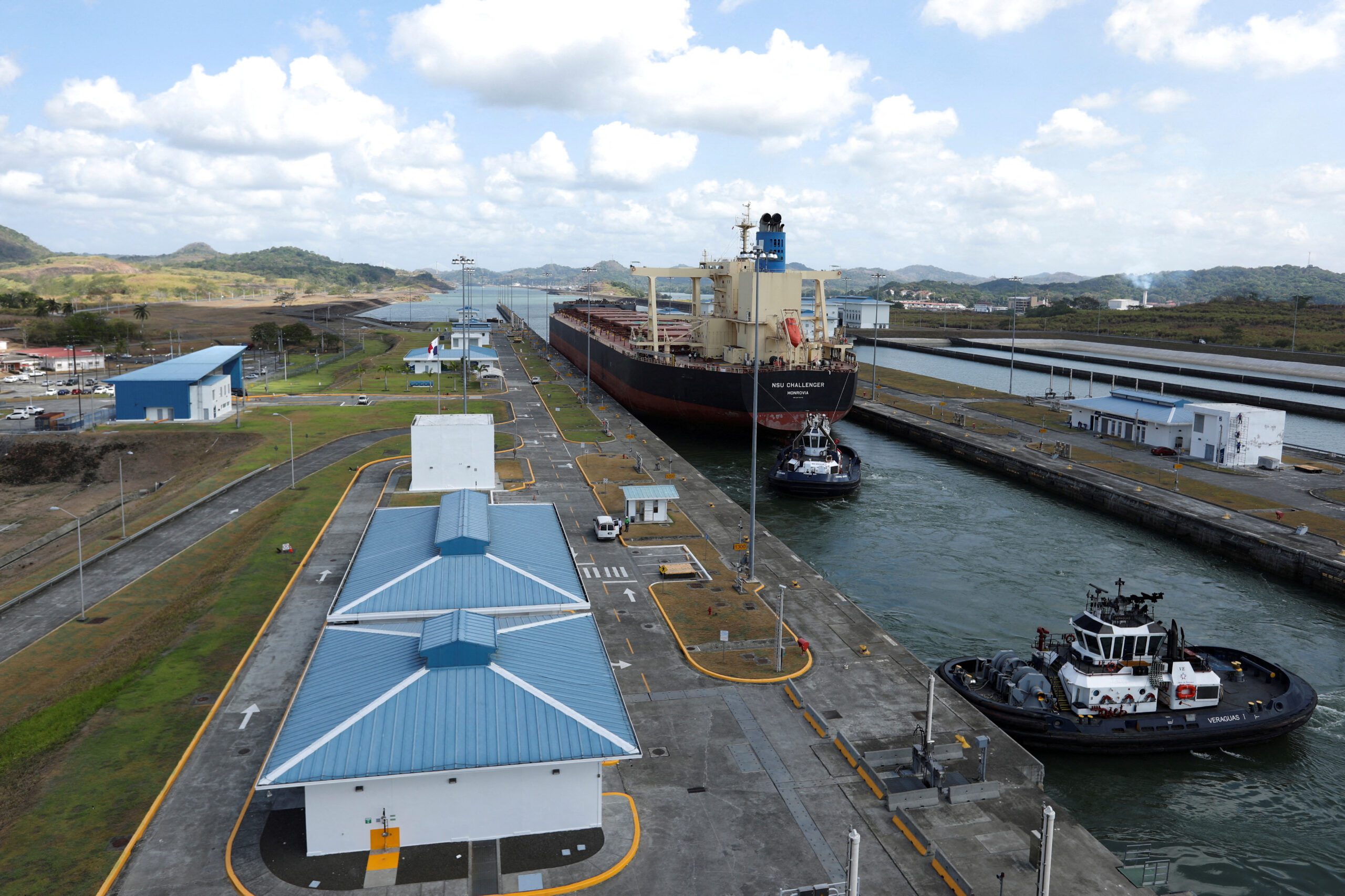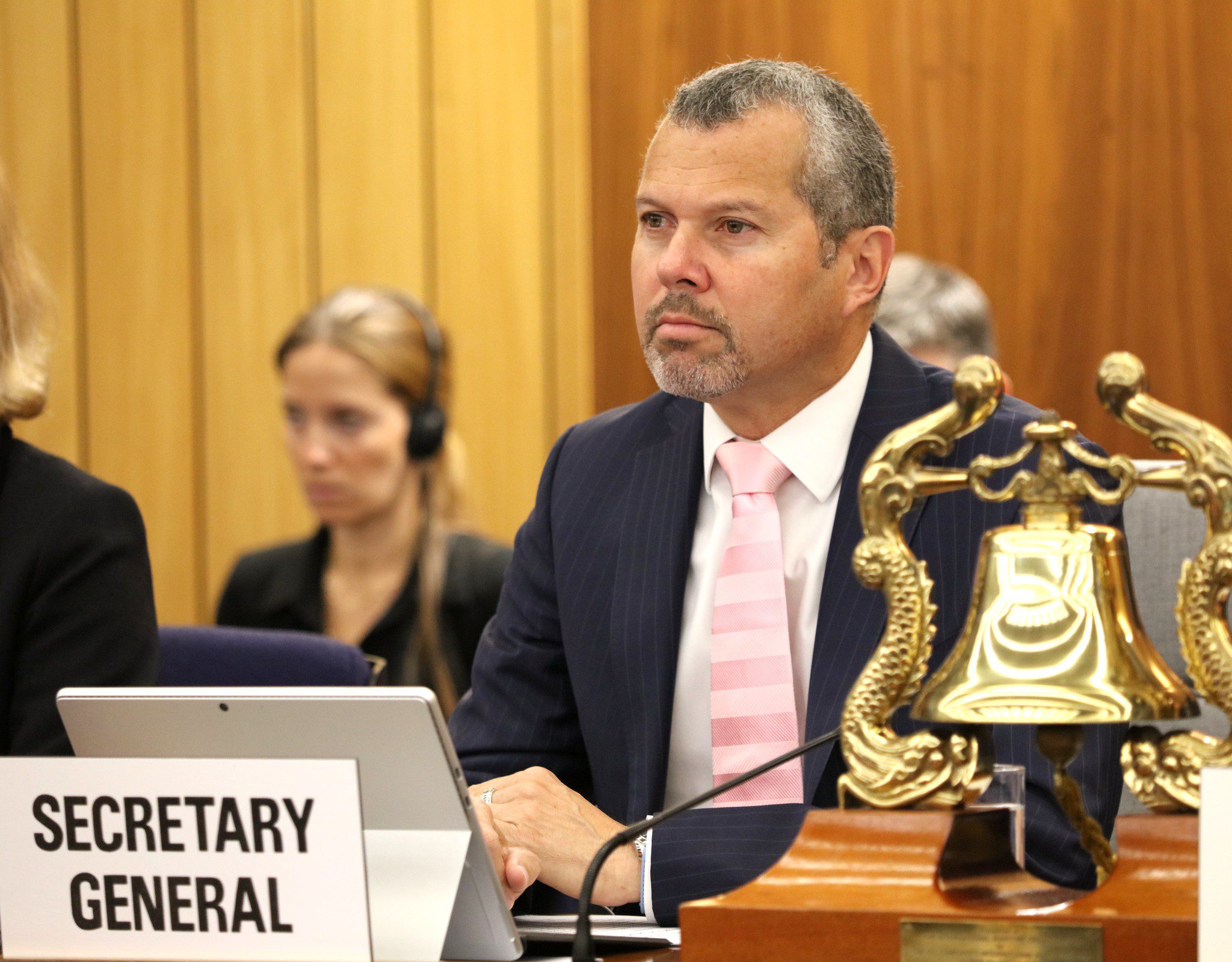By Michael McDonald
(Bloomberg) –The Panama Canal will likely keep restrictions on shippers in place this year as a drought has caused water levels at its main lake to drop to a four-year low, leading to a line of ships waiting to transit the waterway.
The canal authority said it will aim to keep draft restrictions, which limit how deep a ship can sit in the water, at no lower than 44 feet (13.4 meters) for large, Neopanamax ships throughout this year’s drought, Ricaurte Vasquez, authority administrator, said in an Wednesday interview from Panama City.
The limit will allow passage for most vessels, though some ships like container and dry bulk carriers will have to lighten their loads, he said.
In order maintain a draft of 44 feet, the canal authority is restricting the number of ships that cross the canal each day. The canal authority is currently allowing roughly 30-31 ships per day to transit the waterway, down from 36-37 “on a very good day,” Vasquez said.
Allowing more transits would cause water levels to fall further at Lake Gatun, which is projected to drop to 79.5 feet by August from 79.7 feet now, the lowest since July 2019 during a previous drought.
Water from the lake is used to fill locks during transits and then washed out to sea. The freshwater lake also provides drinking water to about half of Panama’s population.
Vasquez said the strategy, combined with anticipated rainfall, is designed to bring lake water levels back to 84 feet by mid-November, when the next dry season is expected to begin.
“We are regulating the number of transits to make sure that we compensate the inflows of rain versus the outflows of transits, and trying to keep the lake level at a specific minimum in order to guarantee 44 feet of draft,” Vasquez said. “We are rain takers. We have to make sure that whatever drop falls into the lake, we take the value of it by storing it or properly using it.”
The restrictions have caused longer wait times for ships crossing the canal with 59 vessels currently in line for transits, according to Panama Canal data. Vasquez said the canal authority will prioritize ships that booked transit slots while handling unbooked ships on a standby basis.
Should the canal receive more rainfall than expected, it could increase the draft. Authorities will announce the changes with enough time for shippers to plan and the canal authority to schedule, Vasquez said.
“It’s becoming a very good analytical exercise,” he said.
This year’s El Niño phenomenon has caused drier conditions than usual in Panama. With droughts becoming more frequent and more severe and ship sizes increasing, the canal is exploring ways to boost its water supply while also guaranteeing an adequate supply of drinking water.
The canal authority partnered with the U.S. Army Corp of Engineers to find more water sources within its current watershed. The canal authority received an initial report from the corp of engineers stating there are no solutions within the canal’s watershed, meaning the canal authority will have to find new water sources outside its jurisdiction.
“It appears to be a minor conclusion, but it’s a major conclusion,” Vasquez said.
Panama law via a referendum prohibits the Panama Canal Authority, a semi-autonomous agency, from building additional reservoirs. Building a new dam and reservoir outside the canal’s watershed will require legislative action to remove the restriction, or the government will have build it, Vasquez said.
The canal authority’s board of directors will meet July 6 to discuss a plan of action and then meet with government officials in the following four weeks to determine a path forward, Vasquez said.
Securing additional water supply will be key to the waterway’s future, Vasquez said.
“We are entertaining every possible solution,” he said. “In order to remain relevant, we have to do that.”
© 2023 Bloomberg L.P.

 Join The Club
Join The Club











